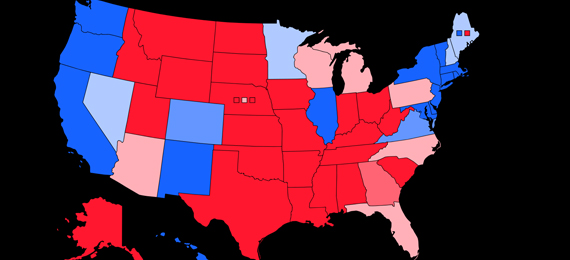
In American politics, the term swing states, also known as battleground states or purple states refers to any state that could reasonably be won by either the Democratic or Republican presidential candidate by a swing in votes. These states are highly competitive that has historically swung between voting for different parties in presidential elections.
These “swing states” are large states which have populations that are closely divided politically. They have a powerful influence on elections in America and the outcome of voting in these states is difficult to predict. So candidates try and win over these battleground states with campaign visits, advertising, and staffing.
Swing states exist in the United States of America because the U.S. voting system is structured around all the states and its presidential election system is designed to make them the important jurisdictional unit in voting.
How Does Swing States Work?
Voting for presidential electors is collectively known as the Electoral College. There are 538 electoral college votes in total and presidential candidates need two seventy electoral votes to win the White House. 48 out of 50 states have a system that whoever gains popular votes will win all of that state’s electoral college votes.
Most Important Swing States
Experts don’t always agree on exactly which states are considered swing states. But Florida is the biggest and most important swing state in the US presidential elections. It has 29 electoral votes. The winner in Florida has won the presidency in every presidential race since 1964. The other states which come under the swing state territory are Colorado, Iowa, Michigan, Minnesota, Nevada, New Hampshire, North Carolina, Ohio, Pennsylvania, Virginia, Wisconsin, Georgia, and Arizona.